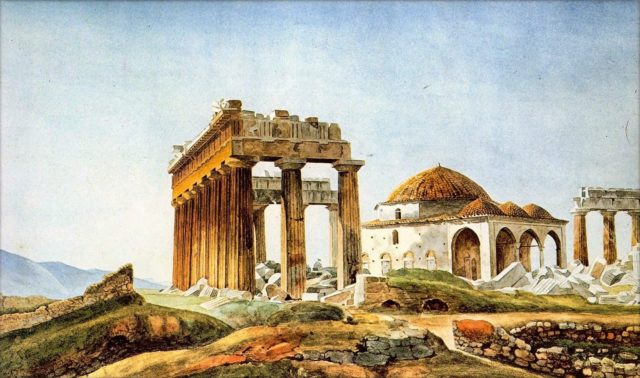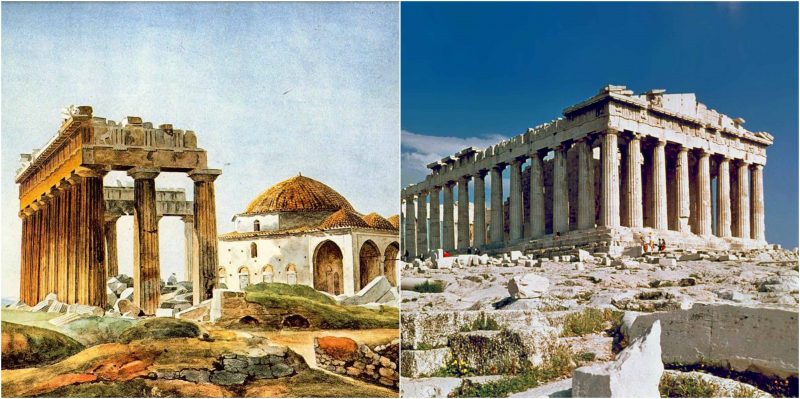In 1456, Ottoman Turkish forces invaded Athens and laid siege to a Florentine army defending the Acropolis until June 1458, when it surrendered to the Turks.The Turks may have briefly restored the Parthenon to the Greek Orthodox Christians for continued use as a church. Some time before the close of the fifteenth century, the Parthenon became a mosque.
The precise circumstances under which the Turks appropriated it for use as a mosque are unclear; one account states that Mehmed II ordered its conversion as punishment for an Athenian plot against Ottoman rule.The apse became a mihrab the tower previously constructed during the Roman Catholic occupation of the Parthenon was extended upwards to become a minaret, a minbar was installed, the Christian altar and iconostasis were removed, and the walls were whitewashed to cover icons of Christian saints and other Christian imagery.

Despite the alterations accompanying the Parthenon’s conversion into a church and subsequently a mosque, its structure had remained basically intact.n 1667 the Turkish traveler Evliya Çelebiexpressed marvel at the Parthenon’s sculptures and figuratively described the building as “like some impregnable fortress not made by human agency”. He composed a poetic supplication that it, as “a work less of human hands than of Heaven itself, should remain standing for all time”.The French artist Jacques Carrey in 1674 visited the Acropolis and sketched the Parthenon’s sculptural decorations.Early in 1687, an engineer named Plantier sketched the Parthenon for the Frenchman Graviers d’Ortières. These depictions, particularly those made by Carrey, provide important, and sometimes the only, evidence of the condition of the Parthenon and its various sculptures prior to the devastation it suffered in late 1687 and the subsequent looting of its art objects.

In 1687, the Parthenon was extensively damaged in the greatest catastrophe to befall it in its long history. As part of the Great Turkish War (1683-1699), the Venetians sent an expedition led byFrancesco Morosini to attack Athens and capture the Acropolis. The Ottoman Turks fortified the Acropolis and used the Parthenon as a gunpowder magazine – despite having been forewarned of the dangers of this use by the 1656 explosion that severely damaged the Propylaea – and as a shelter for members of the local Turkish community. On 26 September a Venetian mortar round, fired from the Hill of Philopappus, blew up the magazine, and the building was partly destroyed. The explosion blew out the building’s central portion and caused the cella’s walls to crumble into rubble. Greek architect and archaeologist Kornilia Chatziaslani writes that “…three of the sanctuary’s four walls nearly collapsed and three-fifths of the sculptures from the frieze fell. Nothing of the roof apparently remained in place. Six columns from the south side fell, eight from the north, as well as whatever remained from eastern porch, except for one column. The columns brought down with them the enormous marble architraves, triglyphs and metopes.” About three hundred people were killed in the explosion, which showered marble fragments over nearby Turkish defenders and caused large fires that burned until the following day and consumed many homes
